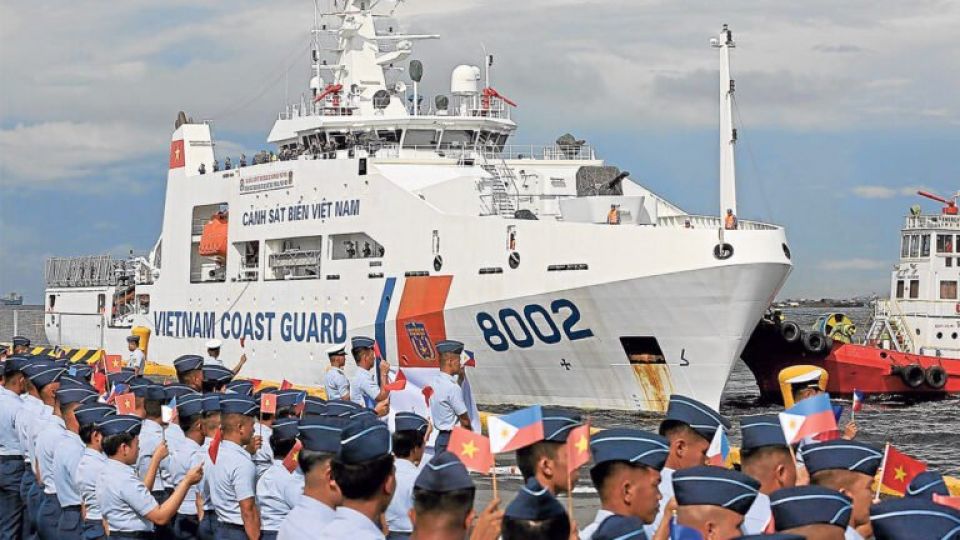November 4, 2024
SINGAPORE – New images released by the Washington-based Centre for Strategic and International Studies show that Vietnam is laying a runway about 2.4km long in the South China Sea and could build two more airstrips.
The Oct 30 report by the centre’s Asia Maritime Transparency Initiative (AMTI) further noted that signs of potential military structures have appeared on several features in the strategic waterway, which is claimed by several countries, including China.
Analysts note that Vietnam’s installations pale in comparison to what China – which claims almost the entire South China Sea – has built in the contested waterway. Still, it means Hanoi’s claims are backed by a credible – and growing – military capability.
According to an AMTI report on June 7, Vietnam’s dredging and landfill has created approximately 955ha in the South China Sea – roughly half of what China has built.
China’s islands are said to house missile systems, laser and jamming equipment as well as fighter jets – something which analysts say Vietnam, with fewer means, is still trying to play catch-up on.
“Three years from when it first began, Vietnam is still surprising observers with the ever-increasing scope of its dredging and landfill in the Spratly Islands. Its progress in the last five months suggests that Hanoi is determined to maximise the strategic potential of the features it occupies,” the AMTI report said.
China asserts its claims over the South China Sea with a growing navy, coast guard and maritime militia.
“Vietnam has its own analogue to that as well, albeit on a smaller scale,” said Dr Collin Koh, a senior fellow at the Institute of Defence and Strategic Studies at the S. Rajaratnam School of International Studies.
Vietnam established permanent maritime militias in coastal provinces in recent years to support the work of its navy. It has also provided funding for the fishing industry to upgrade and strengthen boats in case they are rammed by Chinese vessels.
Dr Koh added: “Vietnam has been able to utilise its own version of grey-zone tactics to counter China, whereas you don’t find that the case for Indonesia and Malaysia, for instance.”
Chinese vessels have pressured oil and gas exploration work by these two South-east Asian countries in their own exclusive economic zones.
The muted Chinese reaction to Vietnamese fortifications stands in stark contrast to Beijing’s attitude towards the Philippines, another South China Sea claimant state.
Manila has ratcheted up publicity over the confrontations between Chinese and Philippine vessels in disputed waters.
This means the public had a front-row seat when the China Coast Guard recently used water cannon and other manoeuvres to block the Philippines from resupplying BRP Sierra Madre, an old warship that Manila had deliberately grounded in the disputed Second Thomas Shoal to stake its claim.
The Philippines in 2023 inaugurated a coast guard monitoring base on Thitu Island, a territory it occupies, and plans to develop an airport there.
Temperatures rarely run so high between Hanoi and Beijing.
Both governments maintain many back channels. There are close ties between their respective ruling communist parties. Beijing was the first foreign stop for Mr To Lam after he assumed the helm of the Communist Party of Vietnam in August. Vietnam has also sought Chinese support for a high-speed railway it is planning to build.
A rare ruffle came in October, when Vietnam condemned an attack on its fishermen by Chinese law enforcement officers that left some with broken limbs. China said its operations were “professional and restrained”.
Still, Ms Hanh Nguyen, a PhD scholar at the Australian National University, calls this only “a slight departure from Vietnam’s previous low-key approach to China’s gradual expansion in the South China Sea”.
Vietnam pursues cooperation with China in areas of mutual interest while simultaneously pushing back on its maritime encroachment.
Beijing, meanwhile, is more concerned about the Philippines than Vietnam when it comes to the South China Sea, said Dr Koh.
“It’s not just to do with the South China Sea per se, but the Philippines’ relationship with the United States; and, of course, the much broader concern regarding how the enhanced defence cooperation agreement between the Philippines and the US might have ramifications on Taiwan,” he said.
Washington and Manila have a mutual defence treaty, which requires both nations to support each other if another party attacks them.
China has not ruled out the use of force to control the self-governing Taiwan and rankles at that what it calls external interference by the US, a key military supplier for Taiwan.
“(If China is) able to force the Philippines to submit to its will, then it may have a salutary effect on the other Asean member states because the Philippines has an existing mutual defence treaty with the US. The other Asean member states who have issues with China in the South China Sea don’t,” said Dr Koh.
“Then you might be able to cow the other Asean member states into submission.”
In contrast, Hanoi’s continued arm’s-length relationship with Washington and its prioritising of ties with Beijing mean that bilateral tussles in the South China Sea do not get out of hand.
“The overall relationship relegates the South China Sea to an irritant but one that should not influence the total bilateral relations,” Emeritus Professor Carl Thayer from Australia’s University of New South Wales told ST.
“It’s a complex relationship but not antagonistic – like one between China and the Philippines. China is trying to get the US out of the Philippines and the US is not in Vietnam in the same way.”


